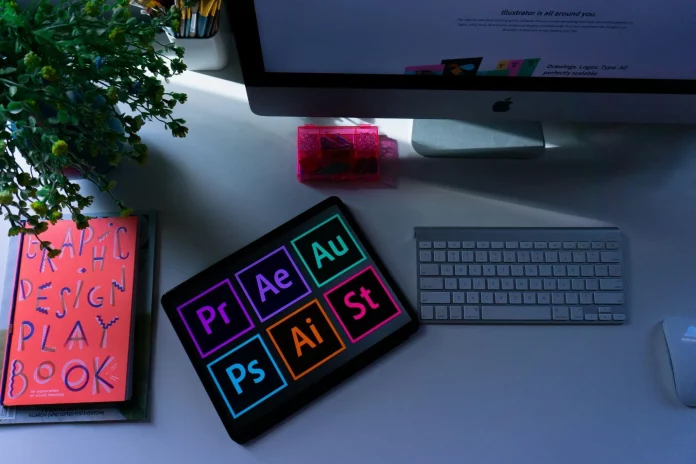In the ever-evolving world of graphic design, Artificial Intelligence (AI) has transitioned from a buzzword to a transformative force. Tools that generate complex designs from simple prompts and software that applies the fundamentals of good design are now realities. This shift is reshaping our understanding of creativity and design, democratizing the field for novices and offering unprecedented efficiency to seasoned professionals.
The integration of AI in design challenges the traditional boundaries between human and machine creativity. For designers, this means an opportunity to explore new creative territories without the constraints of time or skill level. The advice here is to embrace these tools, not as replacements, but as partners in the creative process. They offer a chance to augment human creativity, allowing designers to focus more on the conceptual and less on the mundane.
Revolutionizing with Vector Graphics
Vector graphics, crucial to digital design, have been revitalized by technological advancements. Software platforms now make the creation of scalable, crisp graphics more intuitive than ever. This accessibility is exemplified by tools like VistaCreate, which provides an icon maker noted for its simplicity and effectiveness. The platform at https://create.vista.com/features/icons/ simplifies the icon creation process, making professional-grade design accessible to all.
For graphic designers, the key advice is to leverage these tools to save time and streamline workflows. VistaCreate’s icon maker, for instance, can be a game-changer for those looking to produce high-quality icons efficiently. This tool exemplifies how the right software can enhance creativity, allowing designers to experiment freely without worrying about technical limitations.
The VR/AR Design Revolution
VR and AR technologies have extended their reach beyond gaming into the graphic design domain, enabling the creation of immersive experiences. Designers can now craft virtual environments and augmented experiences, pushing the boundaries of traditional design. This leap into three-dimensional design challenges designers to think beyond flat surfaces, exploring spatial relationships and user interaction in their creations.
The advent of VR and AR in design opens up new possibilities for engaging and entertaining experiences. Designers should view these technologies as tools to enhance storytelling, creating immersive narratives that engage audiences in novel ways. Experimentation is key, with the potential to redefine user experiences in everything from packaging to digital interfaces.
The Rise of Collaborative Platforms
The landscape of graphic design is increasingly collaborative, thanks to cloud-based platforms that facilitate real-time global teamwork. These platforms serve as virtual studios, where ideas from diverse backgrounds converge, fostering creativity. This new era of design collaboration breaks down previous barriers, incorporating a wide array of perspectives into the creative process.
Collaborative platforms encourage a dynamic approach to design, emphasizing the importance of teamwork and communication. Designers are advised to engage with these platforms actively, embracing the opportunity to learn from others and contribute to a collective creative vision. The synergy of diverse ideas can lead to groundbreaking designs that might not be possible in isolation.
Sustainability in Design
Sustainability has become a critical aspect of graphic design, with designers playing a pivotal role in promoting environmental awareness. This shift towards eco-conscious design involves not just material choices but also digital practices that reduce environmental impact. Designers are innovating with eco-friendly materials and messages, driving a movement that blends aesthetics with responsibility.
Adopting sustainable practices in design is not only ethical but also a source of creative inspiration. Designers are encouraged to explore eco-friendly alternatives in their work, from minimalistic designs that save on resources to digital solutions that minimize waste. This approach not only contributes to a healthier planet but also resonates with increasingly environmentally conscious audiences.
Educating the Next Generation
The training of future designers is evolving, with a focus on interdisciplinary skills, digital literacy, and ethical design. Modern design education prepares students to be critical thinkers and problem solvers, equipped to address the complexities of our world. This comprehensive approach ensures that designers are not just creators but innovators who can navigate and shape the future of our society.
For those entering the field, the advice is to seek a broad education that encompasses more than just design principles. Understanding the social, environmental, and technological contexts in which design operates can amplify the impact of your work. Future designers should be prepared to think beyond aesthetics, considering the broader implications of their creations in shaping a better world.
As graphic design marches into the future, propelled by technological advancements and new ways of thinking, the field is ripe with opportunities for innovation and creativity. The real potential lies in how these technologies empower designers to push boundaries, collaborate across borders, and create with a conscience. The future of graphic design is not just about new tools; it’s about a new vision for what design can achieve in our ever-changing world.



































